No Man's Land
Sandhi Wines
Evening Land-Tempest Pinot Noir
Phenomenal nose and no signs of slowing down. — 6 years ago
Damianitza
No Mans Land Lava Dry Red Wine 2014
Vintage 2014 — 7 years ago
Copain
Kiser "En Bas" Anderson Valley Pinot Noir 2014
Tasting at Copain. Beautiful winery with some sweeping views of Sonoma. Again no bottles so just the menu. The Laurel grades was an amazing wine, parcel of land by the ocean. It had that salt/mineral undertone and was crisp. Tidal wave was also very good and similar to a savignon blanc. The high rock Syrah was very good they let’s us try an 09 to give an idea of how it evolves. Solid wine. The 2014 was too tannic to get a good feel for the wine. — 8 years ago
Rene Rostaing
Ampodium Côte-Rôtie Syrah 2010
2010 was a very good vintage in Rhône. Rostaing is a well know producer with people that know and drink Northern Rhône wines, not so much with others that do not. The Ampodium is the entry level into Rene & Pierre Rostaing wines. It is a blend of 13 vineyards in Northern Rhône. They are simply one of the very best producers in the region. I spent an afternoon with Rene & his son Pierre tasting in the their cellar and in their La Landonne vineyard as shown in the photos. The 2010 is drinking beautifully with many good years ahead. On the nose; ripe & slightly stewed/baked fruits of; blackberries, dark cherries, strawberries, creamy raspberries, stewed plum, black raspberries, cherries, steeped fruit tea, dry crushed rocks, iron pan, some white & black pepper, bacon fat, grilled savory meats, pork, black licorice, black cherry cola, decayed & fresh red florals with violets. The body is round and medium full. The tannins round, still a little chewy & around 55% resolved. The length, texture, tension and balance are in near perfect harmony. The fruits are; round, ruby & ripe; slightly stewed/baked fruits of; blackberries, dark cherries, strawberries, creamy raspberries, stewed plum, black raspberries & cherries. Steeped fruit tea, dry crushed rocks, chalky minerals, iron pan, coffee grounds, spice, some baking spices w/hints of vanilla, white & black pepper, drying blood, dry herbs/bay leaf, dry stems, moderate levels of bacon fat & pork, grilled savory meats, black licorice, black cherry cola, decayed & fresh red florals with fresh violets for days. The acidly is round and dripping. The long finish is plush, velvety delicious and lasts & lasts. In good vintages, I would put this in blind with the best of of the best new world wines from any vintage that many love; SQN, Booker, Saxum, Alban, Cayuse, Horsepower etc.. I’d bet most of you would pick it over these producers that cost much more $$$. It’s simply one of the best pound for pound wines/producers for this varietal. Especially, for the $$$. Wow, what a wine for the $. $55 upon release. Photos of; Winemaker Pierre Rostaing and our group in their La Landonne vineyard, the small sign that barely identifies their Estate, an example of the Quartz mineral that runs throughout their La Landonne vineyard and the view back onto the river from the top of the very steep La Landonne Vineyard. Producer notes and history...Rene Rostaing produced their first wine in 1971. However, it took almost three decades before wine became a full time occupation for Rene Rostaing. Domaine Rene Rostaing came about through marriage. The wife of Rene Rostaing was the daughter of the famed Cote Rotie grower, Albert Dervieux, and the niece of Marius Gentaz-Dervieux who gave Christine the vineyard land that became the Northern Rhone estate for Rene Rostaing. Through inheritance from Albert Dervieux Thaize (his father-in-law) who retired in 1990, and from Marius Gentaz Dervieux, his uncle, Rene Rostaing expanded his holdings, giving him some of the best terroir in Cote Rotie. The new vineyard land was basically 3 small parcels in the La Landonne, Cote Brune and Vialliere lieux-dits. This initial expansion from his initial tiny parcel, allowed Rene Rostaing to change careers and become a full time vigneron. Since 2007, the estate has managed by Pierre Rostaing, (son) of Rene Rostaing. Currently Rene Rostaing owns 7.5 hectares of vines that is spread out among 20 different parcels located in 14 locations. Perhaps the most celebrated vines of Rene Rostaing are the 1.6 hectares of vines they own in the La Landonne vineyard (photo). On La Landonne, the vines are more than 60 years old. Some vines are even close to 100 years of age! Those are his largest holdings. The smallest vineyards of Rene Rostaing are located on Cote Blonde. Rene Rostaing also has vines planted in; Fonjean, La Vialliere, Le Plomb, Bouchare, Leyat, La Roche and La Tupin. Their oldest vines are more than 70 years old and are used for Rene Rostaing Cote Blonde. The majority of those plantings are on the steep hillsides with mica, schist and rocky soils. 25% of those vines are closer to the bottom of the slopes and on the flats. Rene Rostaing remains a traditional Cote Rotie producer who is not among the last to harvest. His wines are aged using very little new, French oak barrels. On average, Rene Rostaing Cote Rotie are aged in about 10% new French oak barrels. Rene Rostaing produces 4 different Cote Rotie wines. Rene Rostaing Ampodium, which was previously known as Rostaing Cuvee Classique, is a blend of 13 sections of different vineyards, but it does not include their best holdings on La Landonne or Cote Blonde. The fruit for Rene Rostaing Ampodium has at least 40% or more of the stems removed and run between 12-13.5% abv. The wine is usually made from 100% Syrah and is aged in an average of 15% to 25% new, French oak barrels. The amount of new oak can be less, depending on the character of the vintage. About 1,750 cases are produced each year. The wine is no longer called Cuvee Classique, the name was changed to Rene Rostaing Ampodium with the 2009 vintage. Rene Rostaing La Landonne comes from a terroir consisting of sands with iron oxide and traces of quartz. This wine is always produced from 100% Syrah. The grapes are partially destemmed, with about 10% to 20% of the stems removed, depending on the vintage. There are vintages when no destemming takes place. The remainder of the grapes are whole bunch fermented in stainless steel vats. Rene Rostaing is not a believer of using too much new oak for the aging, which on average uses 10% new, French oak barrels and the remainder of the harvest is aged in demi-muids (600 liter) and French oak barrels. This wine is like most wines from La Landonne, masculine and meaty in character, requiring at least a decade to soften and develop. On average, Rene Rostaing La Landonne produces less than 600 cases depending on what the vintage delivers. Rene Rostaing Cote Blonde is perhaps his best. It’s produced from a blend of 95% Syrah and 5% Viognier. The grapes are co-fermented. The vineyards is planted in the region call Arzel. Arzel is a poor, mineral laden soil with deposits of Silex and Mica on a steep hillside. The vines are more than 50 years of age. The grapes are partially destemmed…35% to 50% of the stems are removed. The remainder of the grapes are whole bunch fermented in stainless steel vats.
The remainder of the harvest is aged in demi-muids. This one is the hardest to find and most collectible of all their wines. In fact, they only produce close to an average of 350 cases of Cote Rotie in most vintages. Rene Rostaing Cote Brune made its debut with the 2013 vintage. The vines were once part of the holdings of Marius Gentaz, which eventually passed to Rene Rostaing. Rostaing replanted those vines in 2000. Made from 100% Syrah. — 8 years ago
Pama Spirits Co.
Pomegranate Liqueur
So, not sure how to follow up on a night that included an incredible wine dinner featuring Ridge Vineyards... The jammy Zin's have left me looking for something a little sweeter (I have no Ridge in the house as alternative). So off to the wonderful land of pomegranate liqueur over ice. This is a dangerous bottle, hence it hasn't been cracked until tonight, I had to clean the dust off, but now it'll never make it back to the shelf...Seek and be rewarded! — 8 years ago
Cayuse Vineyards
En Chamberlin Vineyard Syrah 2006
This wine seriously has more bacon fat and pork than I've experienced in a bottle. The fruit is one of the last things I will have in this description. It's why there is a pig in the picture collage! I had to do it because right now that is the dominating flavor of the wine. I am going to come back to this in a bit. Let's see what happens after some time in the decanter. This starting to calm down a bit. On the nose, bacon fat, pork, grilled meats, BBQ sauce, olive, loads of milk chocolate, brine, brown sugar, dried blood, pepper, black plum, dark cherries, blackberries, faint strawberries, dry stones, loamy clay soil, scorched earth, soy sauce and decayed dark florals. The mouthfeel is thick and brooding. Everything on the nose is on the palate. The acidity is round. The finish is thick, rich with intense flavors that stick to the palate and linger endlessly. If I had more bottles of the 06 En Chamberlin, I'd wait another 8-10 years to open them. It's still a monster. Photos of; the front of their tasting room in downtown Walla Walla that is generally always closed, the stone vineyard of Cayuse that needs to be horse plowed, Christophe Baron (owner), ready to pick grapes and a field pig...just because their is so much pork in this wine. Producer notes and history...while visiting the Walla Walla Valley in 1996, Christophe Baron spotted a plot of land that had been plowed up to reveal acres of softball-sized stones. He became ridiculously excited. This stony soil, this terroir, reminded him of vineyards he had visited in France (Rhone Valley) and Spain. The difficult ground would stress the grapevines, making them produce more mature, concentrated fruit. Christophe Baron had found a new home. He named his vineyard after the Cayuse, a Native American tribe whose name was taken from the French cailloux–which means, of course, rocks. Hours of back-breaking work later, Cayuse Vineyards has become five vineyards encompassing 50 acres: Armada, Cailloux, Coccinelle (Ladybug), En Cerise (Cherry), and En Chamberlin. The majority of the vineyards are planted with Syrah, and the rest dedicated to Cabernet Franc, Cabernet Sauvignon, Grenache, Merlot, Tempranillo and Viognier. All of the vineyards are planted in rocky earth within the Walla Walla Valley appellation. Cayuse was also the first winery in Walla Walla to farm using biodynamic methods. These highly stressed vineyards average a yield of only two tons or less per acre (30 hectolitres per hectare), resulting in wines true to each vineyard’s unique terroir. Cayuse specializes in four estate-vineyard Syrahs, along with Bionic Frog Syrah, Impulsivo Tempranillo, Widowmaker Cabernet-Sauvignon, two Bordeaux blends named Camaspelo & Flying Pig and Viognier. Look for their other partnership wines; Horsepower & No Girls if you haven't already. Nearly 100% all mailing list, restaurants and secondary markets. — 8 years ago
Evening Land Vineyards
Brasserie 19 Pinot Noir 2014
Color of clear ruby mixed with orange color, light. Nose of dried strawberry, aldehyde, spice, prune, complexes and fragrant, also some dates, a bit wet mushroom, and refine acidity note. Taste of refined acidity and subtle sweetness, fermented cabbage, ripe cranberry, dried strawberry, some Unami, hint of zest, almost no tannins, a bit peppery, and a bit flowering note. Taste is refined too. Aftertaste is medium long with savory notes from the taste plus oak. Nice one. — 5 years ago
Louis Jadot
Domaine Gagey Les Drazeys Chambolle-Musigny Pinot Noir 2015
The French Revolution detonated everything about the old order of France, and wine was no exception - far from it. The great vineyards of Burgundy, that had been tended to and ached over by Benedictine and Cistercian monks for centuries, were confiscated and auctioned off to the petite bourgeoisie in Paris and Dijon. The Napoleonic inheritance code, which guaranteed an even split between all children, led to these ancient plots being further divided up with each passing generation.
It wasn't long before there was a multitude of disinterested Parisians who owned a few vines in the Cote d'Or as their birthright. Négociant houses, such as Louis Jadot, popped up to make deals with these small landholders, aggregate their scattered plots, and bring their wine to the world.
Modern Burgundy is still very much a reflection of its transformation during the Revolution, with some of the world’s most famous and valuable land portioned out into tiny parcels. It’s no wonder demand outstripped supply long ago!
(This is adapted from notes for Le Dû’s Wines ‘History of Wine 1453AD-Present’ seminar, where this wine was poured) — 6 years ago
Antica Terra
Ceras Willamette Valley Pinot Noir 2013
It’s usually a good sign when the winemaker can articulate what the wine is about like this: “Ceras is Botanica’s counterpoint. Its color is more purple than red. It is more about minerals and herbs than fruit and flowers. It is a focused and elegant distillation of rock rather than an opulent cascade of fruit. It is an expression of the geology that lays beneath our land, the tart blue fruits of the coast range and the tender herbs that one finds amongst the trees and mushrooms of the Northwest forest.”
Her 2013 Ceras is yet another example of Maggie Harrison’s sorcery over the vines at Antica Terra. The focus and intensity of flavor is off the charts, yet it maintains an almost ethereal weightlessness, only emphasizing the layer of silk that separates you from the wine. The pungent rock is so on point and distinctive it instantly reminded me of the scent of lichen growing on rocks, which I experienced in Colorado when I was 7 or 8 years old. This sets the stage for the level of complexity exhibited. The fruit has both an extraordinarily high level of purity and yet the woven tapestry of herbs and spices and even fruit blending are impossible not to notice. The key being that nothing is forced.
The nuance of complexity only being noticed when desired is nearly an impossible feat. I can’t help but recall James Conaway quoting Andy Beckstoffer in his recently released book: Napa at Last Light: America’s Eden in an Age of Calamity. “If a wine was a model with a chipped tooth, you’d have to give her something to compensate with. If she needs better shoulders, better breasts, give her some. But her real charm is in how she carries the defect.”
After reading his book, I can tell you I’m definitely not certain whether you can accept his quotes verbatim. One thing is certain, though, Maggie Harrison’s Antica Terra wines carry the defect like no other. — 8 years ago
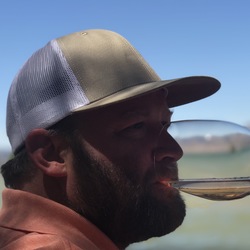


Domaine Maby
La Fermade Lirac Rouge 2013
Stellar value from wonderful importer Eric Stauffeneger. Soft, ripe, fruit-forward but balanced with minerality, leather, spice and lovely lavender aroma. Very traditional expression, slightly rustic but with more than enough young primary fruit and polish to please New World fans. Higher percentage of Syrah (40%), leaning on the darker side of the fruit spectrum. For those who are looking to discover the meaning of the phrase "poor man's Chateauneuf-du-Pape", look no further. For my $ this is a steal right now. — 8 years ago
Lucia Vineyards (Pisoni)
Garys' Vineyard Pinot Noir 2012
A wine I’ve enjoyed mostly upon release or near it. I vowed to wait six years and nearly made it. At least it is 2018...just! It’s worth waiting this/that long for it to develop. On the nose; sweetly, baked fruits of; dark cherries, strawberries, black plum, plums, blackberries, and notes of blue fruits. Cinnamon, vanilla, very light clove & nutmeg, caramel, soft, medium, beautiful spice, black fruit tea, limestone minerals, loamy, dry, brown top soil, fresh dark florals and violets. The mouthfeel is full, rich & lush. The tannins are round, still have some teeth and possess velvety round edges. It’s fruit driven but not a bomb and showing elegance & grace. Fruits are perfectly ripe; dark cherries, strawberries, black plum, plums, blackberries, notes of blue fruits and dry cranberries dip in and out. Cinnamon, vanilla, very light clove & nutmeg, caramel, soft, medium beautiful spice that is more pronounced on the palate, black fruit tea, touch of melted brown sugar/molasses, limestone minerals, touch of rich dark sweet turned soil, loamy dry brown top soil, soft understated eucalyptus/mint, dry fresh florals and violets. The round acidity is just right, just a slight very small alcohol burn, the length, structure, tension and beautifully balanced finish are in a very good place. Even better in 2-3 more years in bottle; which is when I’ll have my next one. Photos of; the winemaking duo of Gary Franscioni (left) and Gary Pisoni, Rosella’s Vineyard on the right. As well as, Garys’ Vineyard at the bottom. Producer notes and history...The Santa Lucia Highlands appellation is known for its rich, vibrant Pinot Noirs. However, that wasn’t always the case. The first Pinot was planted in 1973, but results weren’t all that great. Chardonnay was the appellation’s early star. Much of the area’s current fame for Pinot Noir arguably can be traced to Gary Pisoni, a free-spirited wine enthusiast who grew up in a Salinas Valley vegetable farming family. Pisoni decided to plant a few acres of Pinot Noir in 1982 on his family’s horse ranch, at the southern end of what was to become the Santa Lucia Highlands appellation but his horses started eating the grapes. So, they had to go. His initial planting were limited by a lack of water until he dug a well on the property. Pisoni started planting even more Pinot Noir. The vineyard is now around 45 acres and nearly all of it Pinot. By the late 1990s, word had spread about the success of his vineyard, and a number of Pinot specialists from around California had started lining up to buy his grapes. He started producing his own wine in 1998. Pisoni isn’t the only Gary who has become a force in the Santa Lucia Highlands. Gary Franscioni, a childhood friend, followed Pisoni’s lead by planting grapes and started Roar Wines in 2001. The two of them now have five vineyards between them...all farmed meticulously with the same crew. They are best of friends...sort of a Mutt & Jeff. They have become a formidable presence in the Highlands, attracting interest from top winemakers and Pinot Noir lovers from all over. Franscioni is also from a vegetable farming family; Pisoni figures they’ve known each other since they were 3 or 4. Franscioni saw his friend’s success and once he got some money together, decided to plant grapes of his own. Franscioni’s property is farther north and cooler as it’s closer to the Monterey Bay. He was going to plant Chardonnay. He woke up and Franscioni recalls imitating Pisoni, and shouted, “plant Pinot!” Franscioni planted what became Rosella’s Vineyard, named for his wife, in 1996. He took Pisoni’s advice and planted four acres of Pinot Noir, although he still planted 12 acres of Chardonnay. It’s now a total of around 50 acres with three-quarters of it Pinot Noir. The next year, they decided to become partners and planted Garys’ Vineyard, a 50 acre parcel where they grow Pinot and a little Syrah. Since then, Franscioni has developed Sierra Mar, 38 acres of Pinot, Chardonnay, Syrah and a tiny amount of Viognier. The two teamed up again to establish Soberanes Vineyard, 35 acres of mostly Pinot Noir, with a little bit of Chardonnay and Syrah. That last vineyard was developed by Pisoni’s son Mark. The Garys might seem an unlikely pair. Pisoni is colorful character to say the least and has an outspoken manner. Franscioni comes across as more serious- minded. However, the collaboration between the two, who often address each other as “partner,” clearly works well. The two are good on their own, but better together. Pisoni being more gregarious acts as the frontman. He is the Ambassador. He’s a check on the rest to keep the quality high. Franscioni and Mark Pisoni run the farming on their own vineyards and work together on the joint ventures. The family involvement doesn’t stop there. Jeff Pisoni makes his family’s wines, which are under the Pisoni and Lucia brands. Franscioni’s son, Adam, joined the family business in time for the 2011 harvest. He handles sales for Roar and helps his father manage the vineyards. The grapes from all five vineyards are in huge demand, because the two families are such careful farmers, constantly tweaking and improving. Prominent customers include; Testarossa, Siduri, Kosta Browne, Copain and Bernardus. When a new vintner approaches them about buying grapes, the partners examine the winery’s track record and the Winemaker. If they like what they see, the winery is put on a waiting list. There’s not very much movement in their vineyards. When Franscioni planted Sierra Mar, he and Pisoni had 62 wineries waiting to buy fruit. Soberanes was developed with the idea of working with some new winemakers. There was some concern, even among the two families, that quality might suffer as the vineyard operations grew. However, there’s no indication that’s the case. In fact, with each new venture, they build on what they’ve learned in their older vineyards. Eventually, there will be even more vineyards. The Pisonis and Franscionis have purchased a 100 acre cactus farm in the Santa Lucia Highlands. There’s still a lease on the property. So, prickly pear cactus will continue to be grown for five more years. But at some point, the land will be planted with vines. Both families understand the importance of continuing to build for the future. The Garys looking back tell a story of being in the same spot some years ago and looking at a field of broccoli out back. He told Franscioni that the field would look a lot better with Pinot Noir vines. Now that parcel is part of Rosella’s Vineyard, and it’s planted with Pinot. Everybody thought he was crazy...most people usually think that when someone makes a bold decision. He’s a person who has always had vision and creativeness. He also has tremendous passion. Good things only happen when a person possesses all three of these qualities. Their wines are primarily available by mailing list. However, Nepenthe in Big Sur, CA acts as a quasi tasting room for some of their wines. — 8 years ago

Billecart-Salmon
Brut Rosé Champagne Chardonnay Blend
If you read my posts, it's no secret I really enjoy their Rosé Champagne. Always consistently great and delicious. On the nose; spring florals, sea spray, chalky minerals, tangerine, black cherry, raspberry, watermelon & strawberries. On the palate; tangerine, black cherry, raspberry, watermelon & strawberries, saline, beautiful sticky palate chalkiness, pink roses, baguette, amazing minerality, finish and acidity. Photos of; their house, vineyard and cellar. Producer history and notes...Bilecart was founded in 1818, by husband and wife Nicolas François Billecart and Elisabeth Salmon. For nearly two hundred years, the Billecart family has been making exceptional champagne. Today the House remains independent and is run by the family’s seventh generation under François Roland-Billecart. The Billecart-Salmon House covers around 50 hectares, and gets its grapes from a total of 170 hectares of land. Meaning...they also have a number of great relationships with grape growers. At the foot of the Mareuil-sur-Aÿ hill, the Billecart-Salmon family cultivates one hectare of Pinot Noir on a single, enclosed parcel; the Clos Saint Hilaire. Billecart uses modern and innovative technology to constantly improve the quality of its champagne. From the Côte des Blancs to the Reims Mountain and the right bank of the Marne River are some of the greatest sites for Chardonnay, Pinot Noir and Pinot Meunier. These grapes/sites are all used to make beautiful Billecart champagnes.
— 8 years ago


Evening Land Vineyards
La Source Seven Springs Vineyard Chardonnay 2016
A bottle we picked up when in Oregon 2 summers ago. A lovely wine that we tried to drink somewhat slowly, which paid off as I think the last few sips were probably the best. If you had to make comparisons, I’d definitely peg it closer to Burgundy than California. The influence of oak on this wine is hard to miss, and grows stronger the more it opens and warms. But it’s pleasant and doesn’t overshadow the wines other positive qualities. It racy and austere, with vibrant acidity and subtle fruit. Definitely no poached or cooked flavors here. My guess is this wine would age wonderfully, and I wish I had a second bottle to come back to in about a decade. — 6 years ago
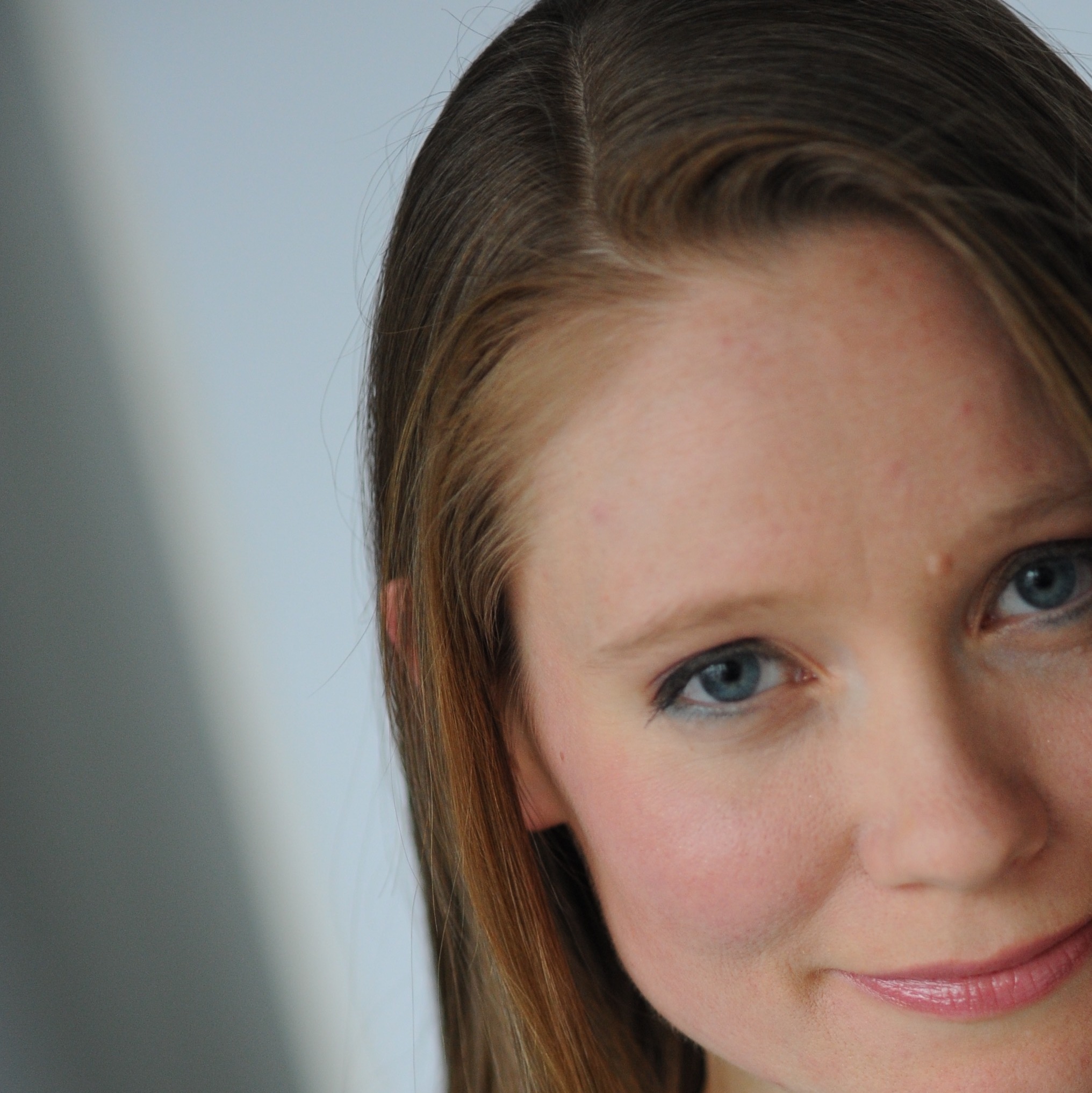
Evening Land Vineyards
Seven Springs Vineyard Pinot Noir 2015
Black raspberry, licorice, mint, wild mushrooms and damp earth- flavors that seem to emanate from deep in a forest. A tad reduced initially. Very savory character to this wine that will take some time to unwind. Some fruit is revealing itself in the back but this will no doubt be a bit too stern and austere for some. Amazing potential. — 7 years ago
Benjamin Leroux
Bourgogne Chardonnay 2015
The 2015 vintage is much like previous ones I’ve tasted. It has such vivacity—so fresh and lively. For me this wine starts with a sense of the sea —full of minerals and salinity which are so natural and refreshing like some deep essence of our bodies that it brings into presence. To this it adds something of the land and the fruits of human cultivation. These are the aromas of alpine flowers and the scent of lemon. Together they create a pleasure born of our ancient sea heritage and our present dwelling place on the land. They bring together in one sip both heaven and earth. Too much for a simple Bourgogne? No, this elemental nature is its magic. — 8 years ago
Bollinger
Brut Rosé Champagne Blend
On the nose; bright cherries, ripe strawberry & cranberry reduction, black raspberries, raspberries, watermelon near the rhine, mixed orange citrus, oyster shells, baguette crust, understated volcanic minerals, chalk, saline, fresh pink roses and florals. The body is full and a shade gluey. The fruits are ripe, rich and candied/gummy in style. Bright cherries, black cherries ripe strawberry & cranberry reduction, black raspberries, raspberries, watermelon near the rhine, mixed orange citrus spray, saline, seashells, soft grey volcanic minerals, lots of grippy powdery razor sharp chalkiness, baguette crust, fresh pink roses & florals, acidity that is round and well done, understated delicate micro bubbles and a long, well balanced, rich finish. The reason why I prefer the Billecart Salmon, Ruinart & Laurent Perrier over the Bollinger is it’s a little too sweet for me. Photos of; the House of Bollinger, cellar, headstone that marks one of their vineyards and their harvest staff picking perfectly manicured rows. Producer notes and history...Bollinger has roots dating back to 1585 when the Hennequins, one of the Bollinger founding families, owned land in Cramant. Before the Bollinger house was founded in the 18th century, the Villermont family practised wine making, though not under their family name. In 1750, Villermont settled at 16 rue Jules Lobet, which would eventually become the head office for Bollinger. In 1803 Jacques Joseph Placide Bollinger was born in Ellwangen, in the kingdom of Württemberg. In 1822, he moved to Champagne and found work at the house of Muller Ruinart, which no longer exists. Many other Germans came to settle in the Champagne region, including Johann-Josef Krug and the Heidsiecks, who founded a house that would become; Charles Heidsieck, Piper Heidsieck, Veuve Clicquot and others. The Champagne house Renaudin Bollinger was founded in 1829 in Aÿ by Hennequin de Villermont, Paul Levieux Renaudin and Jacques Bollinger. The partners agreed that the Villermont name would not be used on the labels, hence the house name Renaudin Bollinger. Starting when Jacques Bollinger married Charlotte de Villermont, the house has been managed by the Bollinger family. Even though Paul Renaudin passed without an heir to his name, the label did not become solely Bollinger until the 1960s. Founder Jacques Joseph Bollinger married Charlotte de Villermont. The had a daughter, who had two sons Joseph and Georges. These sons took over the company in 1885 and began expanding the family estate by purchasing vineyards in nearby villages. The sons also developed the image of the brand, such as when Bollinger became the official supplier to the British court and received a Royal Warrant in 1884 from Queen Victoria. In 1918, Jacques Bollinger, the son of Georges, took over the company and married Emily Law de Lauriston Boubers, known as "Lily". Jacques expanded the facilities by building new cellars, purchasing the Tauxières vineyards, and acquiring the assets of another Champagne house on Boulevard du Maréchal de Lattre de Tassign, where Bollinger's offices are presently located. When Jacques Bollinger died in 1941, Lily Bollinger took over. Lilly expanded production with the purchase of even more vineyards, but is best known for traveling the world to market the brand. Bollinger was modernized under the Claude d'Hautefeuille, who acquired additional vineyards and further developed the brand internationally. Following Claude, his cousin Christian Bizot took over the Bollinger house and expanded world distribution. Their Winemaker also used several James Bond film movies to market the brand. Bollinger is fermented in oak barrels. At harvest, only the first pressing is used in the cuvée, unless the vintage is of particularly high quality, when a second pressing of Chardonnay will be used. Bollinger sells the second pressing, the tailles. Bollinger utilizes two pressing houses (Louvois and Mareuil sur Aÿ) to ensure a short distance between harvest location and pressing. When possible, grapes purchased from growers are pressed by the house. When the pressed wine arrives, the Bollinger cellar master analyzes the musts for quality, discarding and selling off those that do not meet the house standards. The first fermentation is done cru by cru, variety by variety, preserving many of the unique characteristics of the vines location. Bollinger is one of the few Champagne houses to do some first fermentation in oak barrels. Wines that will not hold up to first fermentation in wood are vinified in vats. Bollinger Champagnes usually undergo malolactic fermentation. The Grande Année 1995 did not undergo malolactic fermentation. Bollinger uses only traditional yeast. They’ve decided that new generations of yeasts (agglomerated yeasts and encapsulated yeasts) do not produce satisfactory Champagne. Vintage wine, including all wine to be used in a Grande Année, is fermented in small oak barrels, sorted according to origin and variety. Both oak and stainless steel are used for non-vintage wine. Bollinger also has the last Cooperage in Champagne. The oak barrels are all at least four years old, avoiding the transfer of tannins to the wine. The wines are only lightly filtered. All Bollinger Champagne spends a long time on its lees, contributing to the complex flavour of the wine. Though appellation d'origine contrôlée rules only require 12 months on lees for non-vintage Champagne and for vintage (NV wines, 15 months from tirage to release and vintage wines must be kept for 36 months from tirage to release), Bollinger ages their non-vintage wines three years, and the vintage wines from five to eight years. The Grande Année and R.D. Champagnes are riddled by hand. At disgorgement, Bollinger wines are given a low dosage, to maintain the balance and flavor of the wine. The company uses 6-9 grams of sugar per liter for the Special Cuvée and La Grande Année. The extra-brut R.D. is dosed between 4 and 5 grams. After dosage, the wines are aged an additional several months, resting for a minimum of three months before shipping. Bollinger owns nearly 160 hectares of vines, producing more than 60% of its supply. The vines are largely Pinot Noir, specifically clone 386. Bollinger believes this clone ensures good quality as well as highlighting characteristics of the various terroirs. The vineyards also include some rare ungrafted French vines from before the phylloxera. Bollinger owns vines all over Champagne, including the crus of Aÿ, Bouzy and Verzenay. — 8 years ago

I figured a real keyboard needed to be involved, thanks for the insight.

Migration (Duckhorn Vineyards)
Charles Heintz Vineyard Chardonnay 2012
The Migration label first appeared in 2001 as the second label of Goldeneye, both under the Duckhorn masthead, first focusing on Pinot Noir and later adding Chardonnay. Like Paraduxx to Duckhorn, it is no longer a second label, but a winery unto itself. In 2008 Migration, and by extension, Duckhorn, produced its first Chardonnay. In 2009 they produced their first Chardonnay from the legendary Charles Heintz Vineyard. The Charles Heintz Vineyard is located just outside of the town of Occidental where Charlie’s family has farmed the land for over 100 years. Two ridges in, and only about 8 miles from the Pacific Ocean, the vineyard is situated in the Green Valley of Russian River Valley AVA. Heintz has become one of the most famous Chardonnay sites in California, with notable producers including Ceritas, DuMol, Freeman, Flowers, L'Angevin, Kosta Browne, Littorai, Migration/Duckhorn, Moone-Tsai, Pierson Meyer, and Williams Selyem. With its classic Goldridge sandy loam soils, and located just above the fog line, the vineyard receives abundant sunshine and cool ocean breezes. Super mellow Chardonnay, with candied orchard fruit, honeysuckle, wet stone, and some secondary hazelnut, with just a flutter of mushroom in the background. — 8 years ago
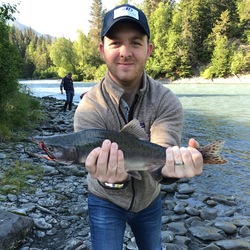
Blankiet Estate
Paradise Hills Vineyard Merlot 2003
This is an elegant, feminine beauty. It's a back to back night of 2003. On the nose, liqueured black cherries, cherries, poached strawberries, warm, slightly chard toast, anise, black cherry licorice, baking spices and dark fresh & dry florals. The mouthfeel is resolved, rich and elegant. Fruits of; black cherries, cherries, poached strawberries, a blend of black raspberries & raspberries. Bright vanillin, cinnamon, medium spice, toast, bright red florals, violets, dark & milk chocolate, rich, moist loamy soils, touch of crushed rocks, delicate volcanic minerals, mouthwatering acidity and a polished, rich finish that lasts & lasts. This is somewhere around it's peak. It's incredibly delicious! Photos of; their beautiful vineyards, amazing Italian style villa estate and front entrance. Producer history and notes...Blankiet was started by Claude & Katherine Blankiet in 1996 with 46 acres ranging over several volcanic hills above the town of Yountville. I believe Claude made his first big money as the creator of Stone Washed Jeans. David Abreu was hired to develop the land and Helen Turley made their first eight vintages. The winery is connected to a deep underground network of caves and were designed by architect John Lail. Blankiet’s current winemaker is Bordelais Denis Malbec, the former cellar master at Chateau Latour. Blankiet is located in the foothills of the Mayacamas Mountains. Their Cabernet Sauvignon, Cabernet Franc and Petit Verdot are planted in volcanic soils while the Merlot is planted in gravelly-clay alluvial soils. Blankiet has great Terrior locations and have spared no expense in their winemaking facilities. If you haven't had their wines, they are definitely worth acquiring. — 8 years ago



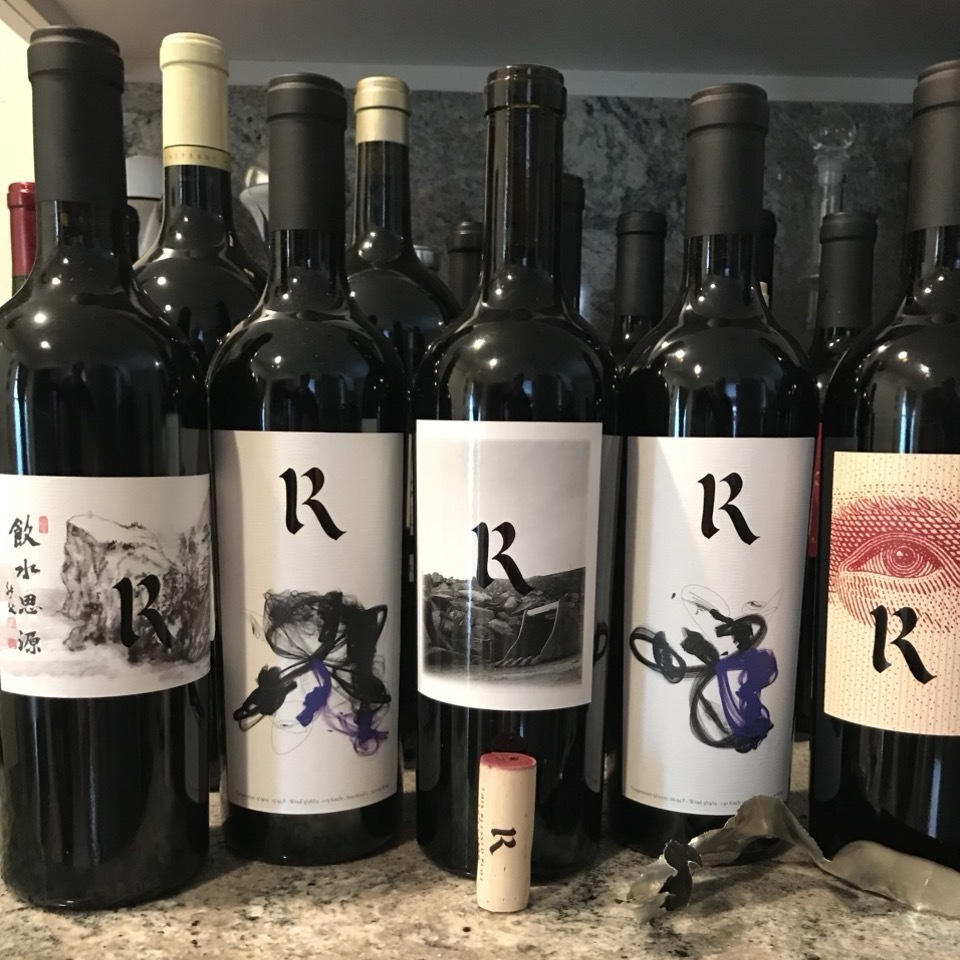

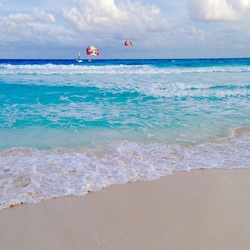

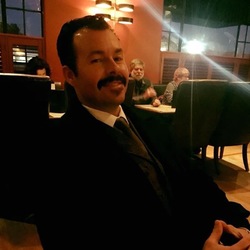




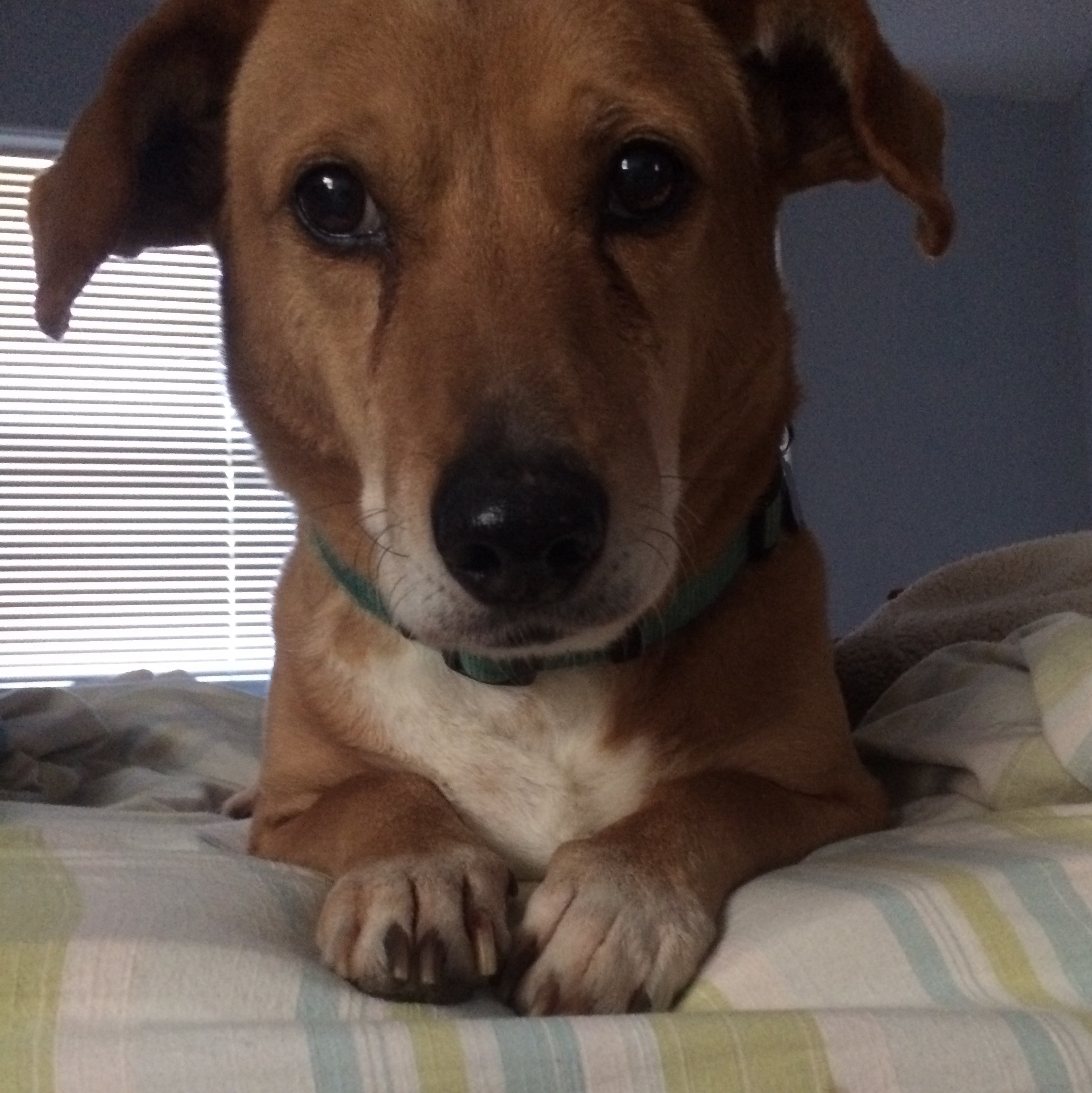

Jennifer Lieberman
Sept 2020 $? (~15-20?) at Norman’s. Color: garnet with corona of raisiny brown. Open about 30 min and... fine. Not sweet, good tannins in mouth, no linger. Unremarkable and goes down easily. After bottle open about 90 min, more spice and edge, classic yet not complex (at all) Pinot flavor. Alc %14.5 but does not land as a “strong” wine. No actual negatives but would only buy ‘16 again for $8 or less. High rating b/c so very easy to drink. — 5 years ago